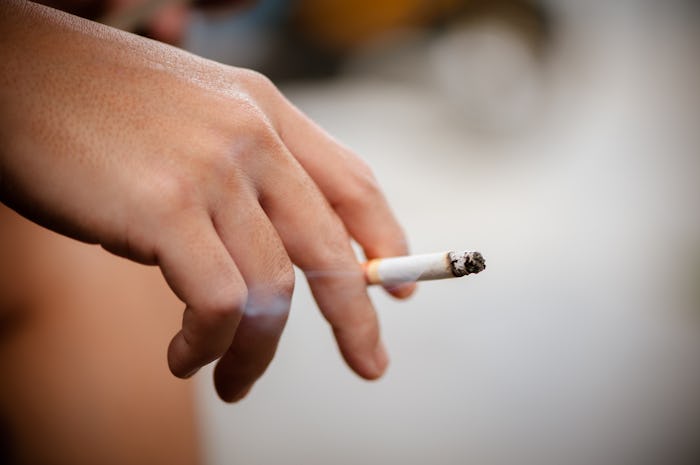Life
Young Kids Are At Greater Risk From Secondhand Smoke Than Previously Thought
There are a lot of different risks associated with exposing kids to cigarette smoke that are already well-known. But in a new study, researchers found that young kids are at greater risk from secondhand smoke than previously thought. Keeping parents updated on these risks and outlining what they can do to minimize them is extremely important so that they can help keep kids healthy.
A lot of people know about secondhand smoke, also known as environmental tobacco smoke (ETS). When people are exposed to secondhand smoke, they breathe in nicotine and the same sorts of toxic chemicals as smokers, as outlined by the American Cancer Society.
Not everyone is familiar with thirdhand smoke, though. A lot of people think that if they just smoke away from kids, then it's fine. However, indoor surfaces, clothing, and even locations outdoors can have residual nicotine and other chemicals left by tobacco smoke. This is referred to as thirdhand smoke, as the Mayo Clinic noted, and it poses a risk to kids.
A new study found that kids may actually be at a greater risk than previously thought. In a new study published in Nicotine & Tobacco Research, researchers tested more than 1,200 kids and found that up to 15 percent of the kids tested had comparable levels of cotinine with an adult smoker, according to Penn State News.
Cotinine is the compound that's formed after nicotine enters the body, according to the CDC. Measuring the amount of cotinine in people's blood is the best way to examine nicotine exposure, whether the person in question smokes or not, the CDC further explained, because cotinine lingers in someone's body longer than nicotine.
The study found that 63 percent of the babies and little kids involved had "discernible levels of cotinine," as reported by the Philadelphia Inquirer. Researchers focused mostly on low-income kids from rural areas in central Pennsylvania and North Carolina, as reported by the Philadelphia Inquirer, taking saliva samples from kids ages 6 months, 12 months, 15 months, and 2 and 4 years.
"It was definitely more than we expected, and it's scary," said Lisa M. Gatzke-Kopp, the study's lead author, said, according to the Philadelphia Inquirer, adding:
"I think some parents are trying to reduce their children's exposure ... They're making a good effort. They go outside, or they don't smoke around their child, but they may not know it's all over them, and when they pick the baby up and cuddle the baby, the baby's getting it through their clothes, their hair."
The results of this study are notable because it focused on infants and young toddlers. In the past, similar studies looking at cotinine levels focused on older children. One 2014 study looked at kids aged 1 to 16 in examining cotinine levels in children admitted for asthma, as well as how likely they might have been to be readmitted.
If you smoke, there are ways to try reducing your kid's exposure to secondhand and thirdhand smoke. To start, there needs to be a zero tolerance rule on smoking inside homes, vehicles, or any enclosed spaces that your kid will be around or in which they'll spend a lot of time.
Thirdhand smoke stays in your clothes and hair, so VeryWell Health also recommended that parents shower or wash their hair before snuggling up with little ones. In addition, if possible, the outlet noted that you can clean surfaces and materials exposed to smoke with vinegar, but make sure that you're only using vinegar on things that it won't damage.
Vinegar is suggested because nicotine can only be removed by something acidic and since most soaps are alkaline, the opposite of that, they're not a good option, VeryWell Health explained.
Totally eliminating the risk that comes with exposing kids to second or thirdhand smoke is nearly impossible if a parent or close family member is a smoker. But, this study does point to the need to provide more education for parents so they can fully understand how exposure works — and any risks that may come along with it.
After experiencing a traumatic c-section, this mother sought out a doula to support her through her second child’s delivery. Watch as that doula helps this mom reclaim the birth she felt robbed of with her first child, in Episode Three of Romper's Doula Diaries, Season Two, below. Visit Bustle Digital Group's YouTube page for more episodes, launching Mondays in December.
